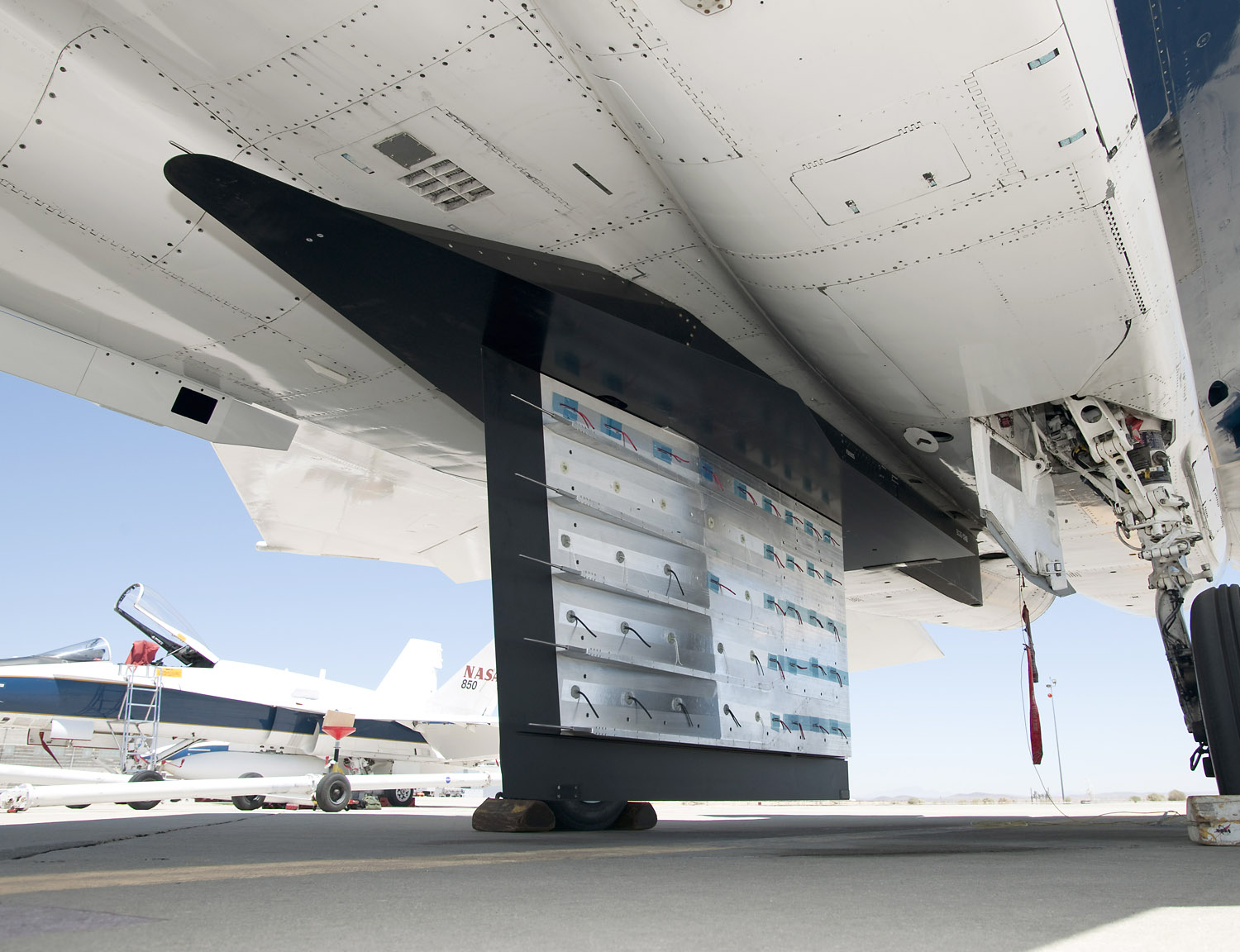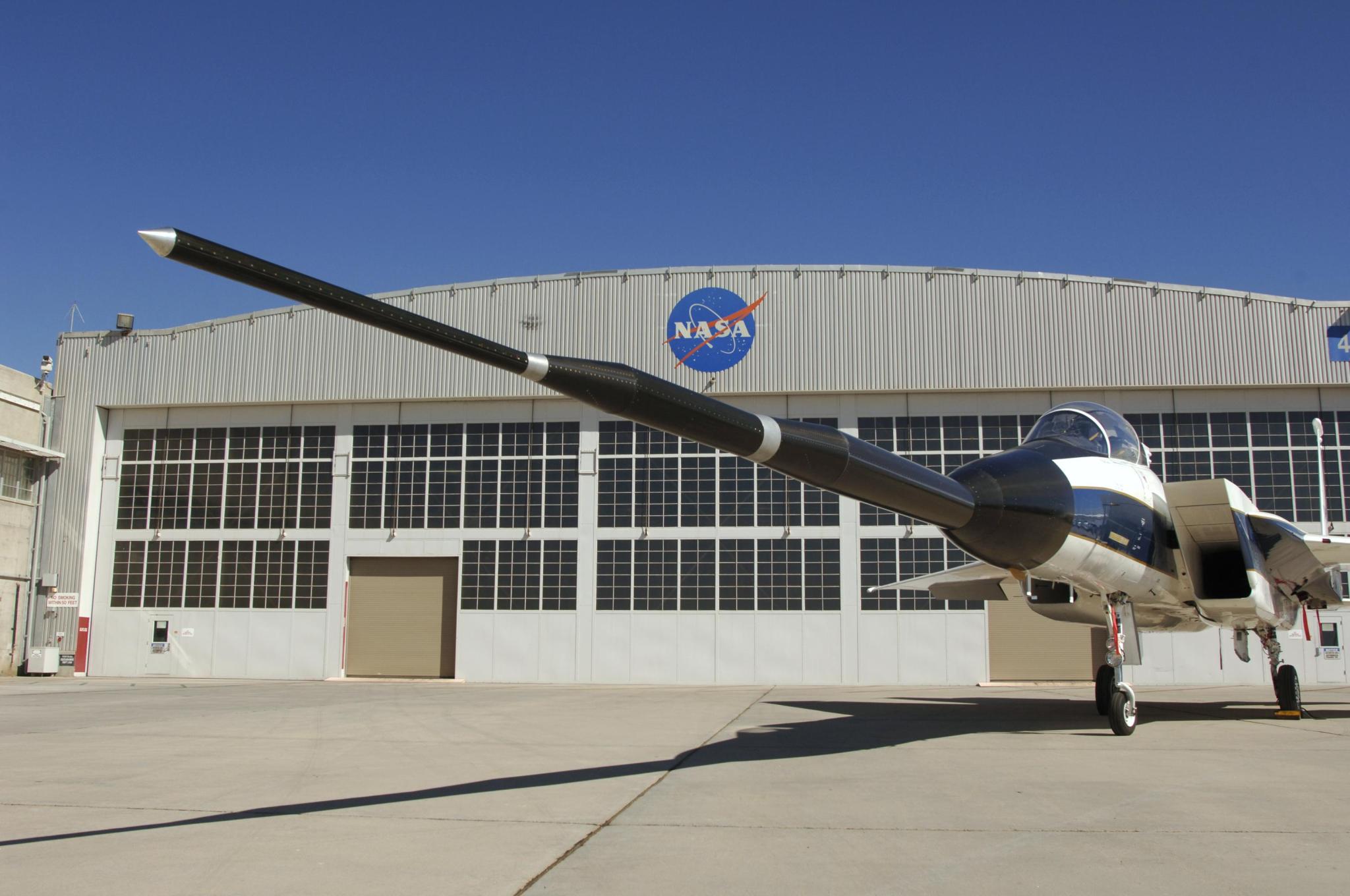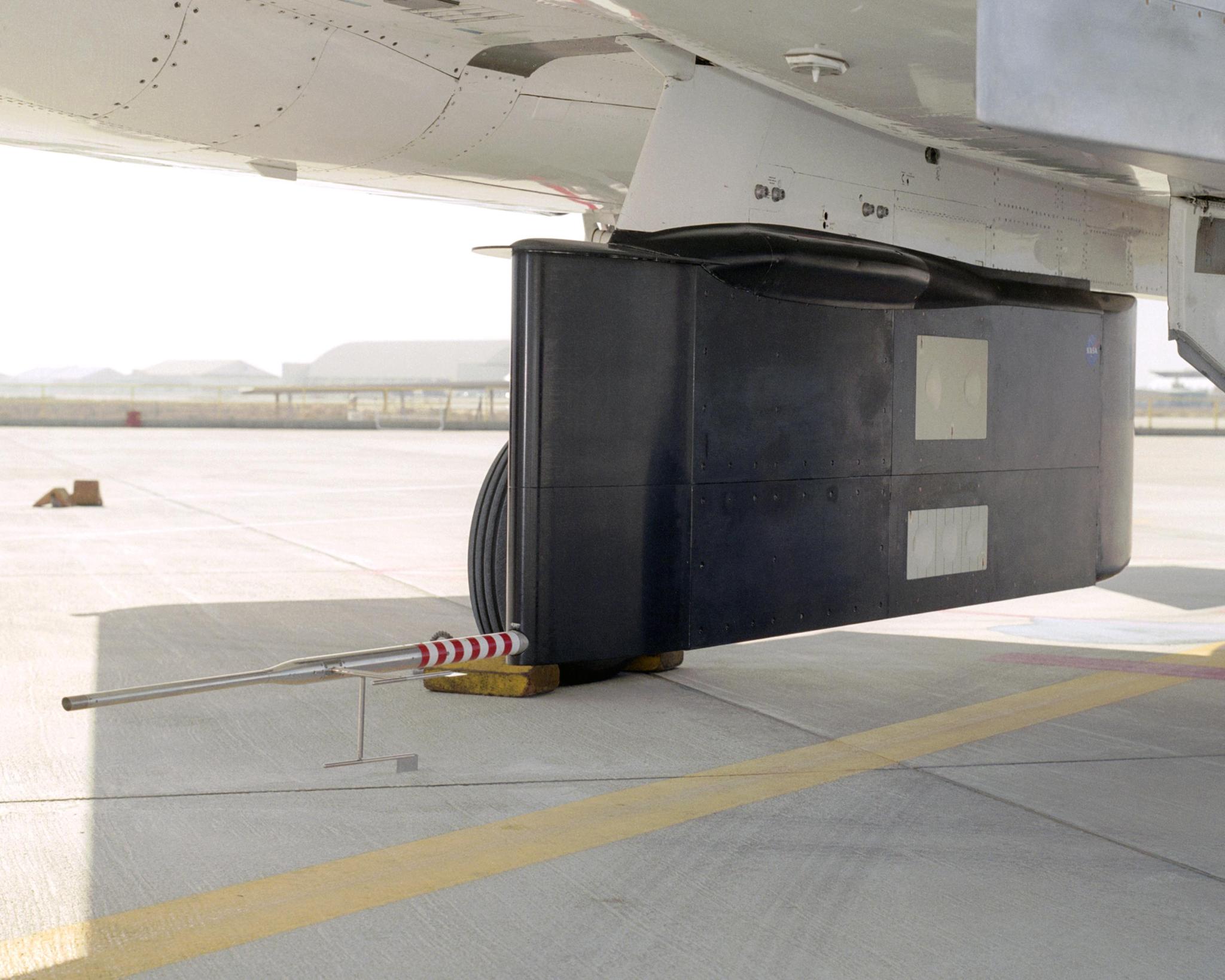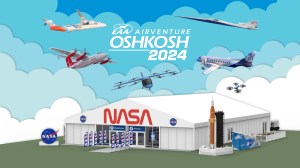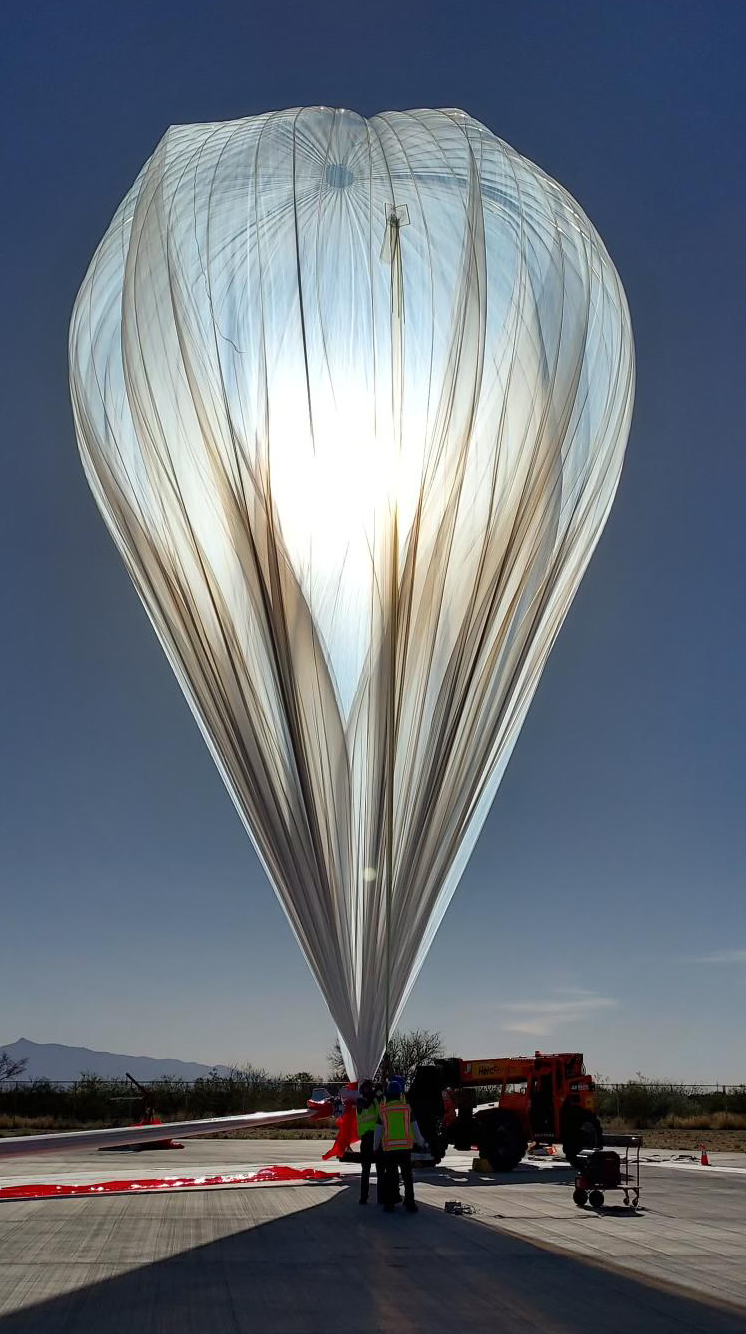NASA’s Armstrong Flight Research Center in Edwards, California, uses a modified F-15B aircraft as a test bed for a variety of flight research experiments. Coupled with either a flight test fixture or a propulsion flight test fixture mounted underneath the aircraft, the F-15B provides a unique flight research capability.
Aircraft Description
Armstrong’s F-15B is a two-seat version of the F-15 tactical fighter aircraft built by McDonnell Douglas, now a division of The Boeing Company. The aircraft was obtained in 1993 from the Hawaii Air National Guard. In addition to flying research missions, Armstrong’s F-15B also is used for crew training, pilot proficiency, and safety chase support for other research aircraft.
Bearing NASA tail number 836, the F-15B is 64 feet long and has a wingspan of just less than 43 feet. It is powered by two Pratt and Whitney F100-PW-100 turbofan engines that can produce almost 24,000 pounds of thrust each in full afterburner. It is capable of dash speeds well in excess of Mach 2, more than twice the speed of sound, at altitudes of 40,000 to 60,000 feet; although, speeds are limited to Mach 2 when a flight test fixture is mounted beneath the fuselage. The aircraft has a full-fuel takeoff weight of about 42,000 pounds and a landing weight of about 32,000 pounds. It has aerial refueling capability for extended-duration research missions.
A data acquisition system gives the F-15B a capability that makes it one of the most versatile research aircraft NASA flies. The data system includes a research airdata system for the aircraft itself, a Global Positioning System (GPS) navigation package, a nose boom that contains an airdata probe, a digital data recorder and telemetry antennas. In addition, an on-board video system monitored from the rear seat of the cockpit transmits high-speed airborne video and photography to researchers on the ground.
Flight Test Fixtures
The F-15B carries one of several flight test fixtures mounted underneath its fuselage to help conduct flight research experiments.
The advanced flight test fixture is built primarily of carbon/epoxy materials and is in two sections: an upper avionics pylon and a lower test article. The avionics pylon is a permanent structure housing avionics, research instrumentation, and other support equipment. Individual experiments are mounted on the lower section for flight testing. When needed, a removable air data probe is installed near the bottom of the test article’s nose. Since the lower section is removable, it may be replaced by other aerodynamic shapes for specific experiments.
A propulsion flight test fixture (PFTF) allows the aircraft to carry and test advanced prototype engines and propulsion technology. It is a “flying engine test stand,” allowing actual flight data on experimental engines that would otherwise be gleaned from traditional ground test stands. The PFTF is equipped with three bays containing removable racks that can be used for experimental systems, instrumentation, and other critical equipment for a research mission, including small fuel tanks and instrumentation for experimental engines. The PFTF also is equipped with a force balance consisting of two instrumented attachment points for small test engines. The force balance instrumentation can measure various parameters on an experimental engine, such as thrust, inlet drag, and aerodynamic movement.
The centerline instrumented pylon (CLIP) is a test pylon that was structurally designed to carry larger span experiments, such as an airfoil, underneath the centerline of the F-15B aircraft. The CLIP has a large splitter plate at its bottom to protect the experimental attachments below from aircraft noise and airflow disturbances, as well as to promote airflow around the test article.
Recent Research
Channeled Centerbody Inlet Experiment
The F-15B research aircraft flight-tested an advanced propulsion concept, the Channeled Centerbody Inlet Experiment (CCIE) in 2011.
A primary research objective of CCIE was to define and measure the airflow through an experimental jet engine inlet, then compare it to the airflow through a standard inlet by use of two interchangeable center bodies installed in the engine inlet that directed and compressed airflow through the engine.
One center body was channeled; the other had a conventional, smooth shape. Slots cut along the length of the channeled center body simulated a simple device that in an actual inlet would allow optimization of the amount of air flowing into the engine, resulting in improved airflow efficiency at a wide variety of speeds and improved fuel efficiency.
Eagle Aero Probes
Armstrong’s F-15B was also used to flight test two new supersonic shock- wave probes to determine their viability as research tools in 2011. Sonic boom researchers expect the probes developed by Eagle Aeronautics of Hampton, Virginia, to aid their understanding of supersonic shock waves. The ultimate goal of NASA’s sonic boom research is to find ways to control and lessen the noise from shock waves, so that supersonic flight could become more routine.
Supersonic Boundary Layer Transition Laminar Flow Studies
In 2010, NASA Armstrong partnered with the Aerion Corp. for the first phase of a flight experiment called the Supersonic Boundary Layer Transition (SBLT) project, an effort accomplished through a Space Act Agreement between the two partners. NASA Armstrong provided the F-15B test bed along with the required ground and flight support for the effort. NASA and Aerion shared in the resulting data from the flights, which took the experiment to speeds up to Mach 2.0, or twice the speed of sound.
The flights gathered baseline data on a composite flat plate to aid calibration of instrumentation designed to investigate the extent and stability of natural laminar or smooth airflow at supersonic speeds over a special test airfoil section during second-phase flights scheduled for 2012. Engineers used the data to determine the effect of airfoil manufacturing tolerances on laminar airflow. Aerion engineers expect the research to aid in development of a highly efficient laminar-flow airfoil design for the firm’s planned supersonic business aircraft.
Quiet Spike
From 2006 to 2009, Gulfstream Aerospace and NASA Armstrong teamed in a project called Quiet Spike™ to investigate the suppression of sonic booms.
The project centered around a retractable, 24-foot-long lance-like spike mounted on the nose of NASA’s F-15B. When the aircraft flew at supersonic speeds, the spike created three small shock waves that travelled parallel to each other all the way to the ground, producing less noise than typical shock waves that build up at the front of supersonic jets.
Space Shuttle Return-to-Flight
As part of NASA’s space shuttle return-to-flight effort following the loss of the shuttle Columbia and its crew during the STS-107 re-entry from space on Feb. 1, 2003, engineers at NASA’s Johnson Space Center asked Armstrong to help model insulating foam loss from the shuttle’s external fuel tanks.
The flight test effort, called the Lifting Insulating Foam Trajectory project, used a Dryden (now Armstrong)-designed foam ejection system installed in the F-15B’s flight test fixture to acquire data on how insulating foam debris or “divots” behaved when the small pieces were shed from shuttle external fuel tanks during launch. The F-15B tested the flight characteristics of the divots in a real flight environment at speeds up to Mach 2.




























